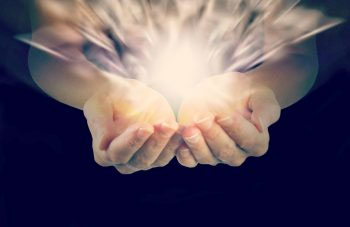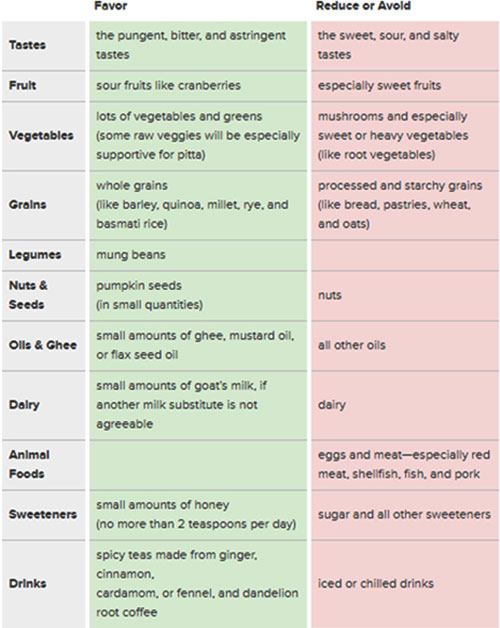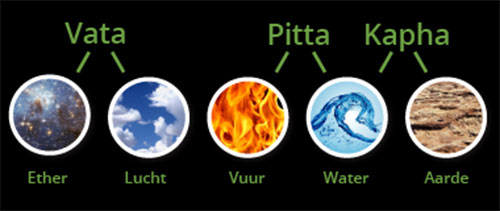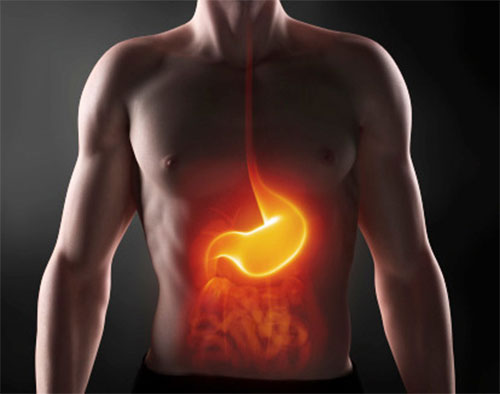AMA: The Antithesis of AGNI (2)
Read the first part of this article
Receiving PRANA
PRANA, the vital breath, is the subtle essence of the life force that animates each of us. It infuses every cell and tissue throughout our bodies. It is carried on and stimulated by the breath. Imbibing PRANA is very helpful in digesting and eliminating AMA. There are a number of effective ways to bathe our tissues in fresh PRANA. These practices are especially good for asthma, bronchitis, emphysema, anxiety, fear, the nervous system as a whole, and the consciousness.

The simplest method is to spend some time in nature and either take several deep, relaxed breaths into the belly, or go for a relaxed, enjoyable hike. PRANAYAMA – either indoors or out of doors (as long as it is not excessively windy) – is another powerful way to infuse the mind-body organism with PRANA. Beginning practices that are appropriate for most anyone include Full Yogic Breath, UJJAYI (Breath of Victory), and NADI SHODHANA (Alternate Nostril Breathing).
Yoga
Yoga is similarly beneficial because it awakens PRANA throughout the body, warms the body, usually induces a mild sweat, helps to stretch and wring out tissues that may be storing accumulated AMA, and calms the mind. While the most balancing style of yoga may vary from one person to the next, even only 20 minutes of yoga per day can be remarkably transformative.
Diet
The diet can be a powerful ally in eliminating AMA. Here are some simple adjustments that can make a huge difference:

Taking a short walk after meals or lying on the left side for several minutes after lunch can also help to effectively kindle AGNI and digest AMA.
Fasting
Fasting can be very helpful in eliminating AMA, but can also be very provoking to some constitutions and should be done with care. VATA types will often do best on short fasts that include liquid soups for a bit of sustenance. PITTA types typically tolerate juice fasts, especially during the spring and summer. KAPHA types, on the other hand, usually benefit from a brief water-only fast, though they tend to resist actually doing it. In any case, sipping on hot water or spice teas (i.e. black pepper, cinnamon, and cardamom) can help to clear toxins while settling hunger pangs in the stomach. All three DOSHA-s respond well to mono-diet types of fasts where something like kitchari is consumed for the length of the cleanse.
Cleansing Therapies
A deeper cleansing regimen is often required in order to draw AMA out of the deep tissues. Some are short and simple. Others are longer, more complex, have a deeper impact, and should only be done under the guidance of a trained practitioner. For example, PANCHAKARMA, Ayurveda’s signature cleanse, is entirely organized around loosening AMA, toxins, and excess VATA, PITTA, KAPHA, from the deep tissues, moving them to the digestive tract, and from there, eliminating them from the body. While there are many options, it is important to choose a cleansing program that feels completely manageable to you and to enlist adequate support for your process. Otherwise, you may struggle and your efforts will not deliver the results you might have hoped for. In any case, an Ayurvedic practitioner can help guide you and can customize your approach to more specifically address your concerns and imbalances.
Cultivating a Supportive State of Consciousness
Because the consciousness and body are one, AMA is also affected by our quality of consciousness, and can be treated by increasing SATTVA in our lives while being mindful not to overindulge on RAJAS and TAMAS. SATTVA is the principle of light, clarity, equilibrium, and wisdom. RAJAS is the principle of passion, action, and movement. TAMAS is the principle of darkness, inertia, heaviness, and decay. Each of them has a place in our lives, but AMA shares qualities with RAJAS and TAMAS, not SATTVA. Therefore, when trying to clear accumulated AMA, it is important to expand SATTVA and to be mindful of balancing RAJAS and TAMAS.
Here are some ideas about how to do that:
• RAJAS is balanced with the practice of compassion and patience.
• TAMAS is countered by practicing selflessness and generosity.
• SATTVA is encouraged by many of the above strategies, spiritual practice, and by cultivating unconditional love, contentment, and peace within.
In addition, consider the impact of simply cultivating deep respect and appreciation for one’s self. Bathing the tissues in self-love can improve the body’s intelligence, even at the cellular level. On the other hand self-deprecating thought patterns and self-loathing can be detrimental to the healing process.
More Precise Tools for Specific Types of AMA
As we have seen, there are a number of effective ways to treat AMA systemically. However, AMA routinely mixes with VATA, PITTA, and KAPHA, and each of the DOSHA-s interacts with AMA in a unique way. Specific manifestations of imbalance in the body often provide important clues as to which DOSHA(s) are involved, and can help us to identify additional measures that will provide more specific support to our particular type of AMA.

VATA AMA
When AMA mixes with VATA, it tends to accumulate in the lower abdominal area and pelvic cavity, and has a particular propensity for disturbing the colon and the joints. VATA AMA may also cause a dry or astringent taste in the mouth. As it disturbs AGNI, VATA AMA increases the likelihood of constipation, and can also cause dry skin, congestion, bloating, generalized body aches, and pain. Eventually, VATA AMA can lead to more serious disorders like diverticulitis, arthritis, and sciatica.
Balancing VATA AMA
Because VATA AMA tends to accumulate in the lower abdomen and the colon, softening demulcents are often indicated, as are medicinal plants like hingvastak, trikatu, and aloe vera gel. Herbs and spices that help to digest VATA AMA include fresh ginger, black pepper, pippali, fennel, guggulu, chitrak, cinnamon, hing, ajwan, mustard, castor oil, and rock salt. NADI SHODHANA is a particularly balancing PRANAYAMA for VATA type AMA.
PITTA AMA
When AMA affects PITTA DOSHA, it tends to accumulate in the central abdominal region, causing stagnation in the small intestine, liver, and gall bladder. PITTA AMA also has a tendency to circulate in the blood. It can cause offensive smells that are fleshy, sour, or acidic in nature and may result in a bitter or sour taste in the mouth. The urine, stools, and the coating on the tongue tend to be dark yellow or greenish in color. PITTA AMA is heavy, stagnant, thick, and cooler than healthy PITTA. It dampens the strength of the digestive fire, subdues the appetite, and can create heartburn, acid indigestion, nausea, diarrhea, feverishness, rashes and other skin disorders, as well as widespread inflammation. If left untreated, PITTA AMA can cause ulcerations to mucus linings, more serious disorders in the liver, as well as infections of the blood.
Balancing PITTA AMA
PITTA AMA responds well to purgation, bitter herbs, rhubarb, and aloe vera gel. Herbs and spices that help to digest PITTA AMA include avipattikar powder, coriander, neem, musta, fresh ginger, cinnamon, lime, and tamarind. SHEETALI (Cooling Breath) is a particularly balancing PRANAYAMA.
KAPHA AMA
KAPHA type AMA tends to accumulate in the stomach, chest, lungs, and sinuses. It is thick, sticky, cloudy, stringy, foul smelling, is not easily expectorated, and can create a salty or sweet taste in the mouth. One may feel the urge to burp, but be unable to relieve the sensation. KAPHA AMA subdues both AGNI and the appetite, and often leads to copious mucus, colds, coughs, sinus congestion, as well as lymphatic congestion and tenderness.
Balancing KAPHA AMA
Because KAPHA AMA concentrates in the stomach and lungs, it responds well to expectorants, emetics and herbs and spices that are pungent, bitter, and astringent. Herbs and spices that help to digest KAPHA AMA include trikatu, dried ginger, black pepper, pippali, cumin, punarnava, chitrak, guggulu, garlic, kutki, vidanga, tulsi, mustard, hing, ajwan, and rock salt. BHASTRIKA (Bellows Breath) is a particularly balancing PRANAYAMA.
Broadening Our Perspective
As destructive as AMA is, the healing process is remarkably supported by positive ideas and attitudes. So it is also important to direct some attention toward appreciating our bodies and their natural ability (when given proper support) to digest and eliminate AMA. Remember, AMA cannot form in the presence of truly balanced AGNI. So in the long run, tending to AGNI is just as important as eradicating AMA.
If you are interested in expanding your understanding of AGNI and the different types of imbalances that can hinder it’s proper functioning, you may find these additional resources helpful:
• The Importance of Healthy Digestion
As an introduction to the critically important Ayurvedic concept of AGNI, this resource explores AGNI’s role in maintaining health and vitality throughout the body, and offers practical tools for kindling the sacred fire within.
• The Importance of AGNI
This article explores the specific functions of AGNI, as well as the signs and symptoms of both healthy and impaired AGNI.

• The Four Varieties of AGNI
This article compares balanced AGNI to the different types of imbalances that can disrupt it when excess VATA, PITTA, or KAPHA accumulate in the body, and offers appropriate therapies for each type of imbalance.
• An Ayurvedic Guide to Healthy Elimination
Elimination is critical to the successful eradication of AMA. This resource provides a comprehensive look at healthy elimination through the lens of Ayurveda; it highlights the importance of healthy bowel habits and stools, offers some general tips for supporting proper elimination, and links to more specific articles on VATA type elimination, pitta type elimination, and KAPHA type elimination.
• Ally yourself with the divine fire of transformation
In this article you can find excellent and effective techniques to awaken your inner fire, AGNI.
yogaesoteric
March 19, 2020
